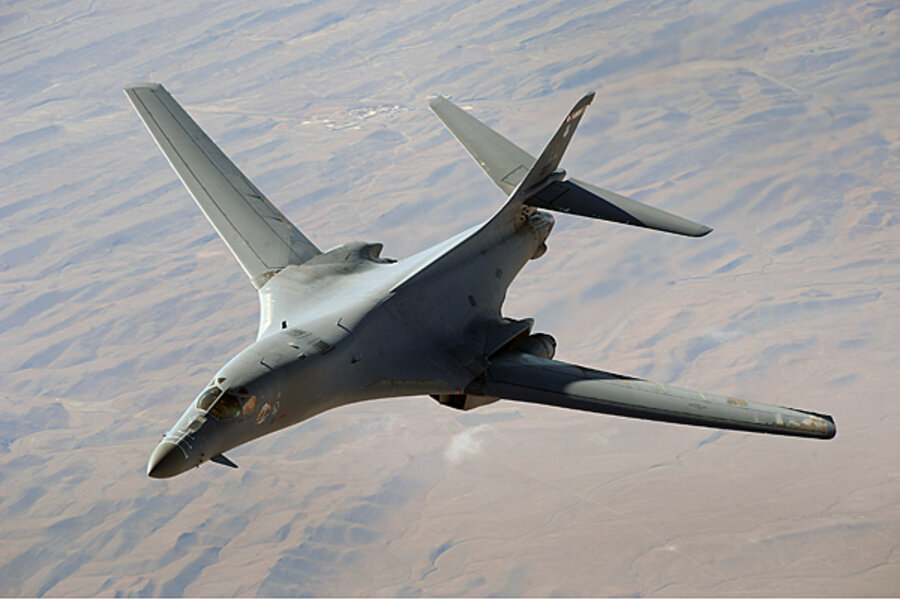B-1 bomber crash: Four crew members ejected from the aircraft survive
Loading...
| SIOUX FALLS, S.D.
A B-1B bomber out of South Dakota's Ellsworth Air Force Base crashed in a remote area of southeastern Montana on Monday but the four crew members survived, Air Force officials said.
The two pilots and two weapons system officers ejected from the aircraft before the bomber crashed near Broadus, Mont., said Col. Kevin Kennedy, commander of the 28th Bomb Wing. He said the crew survived but there were some injuries.
"We are actively working to ensure the safety of the crew members and have sent first responders to secure the scene and work closely with local authorities at the crash site," Kennedy said in a statement. "Right now, all of our thoughts and prayers are with the crews and their families."
Kennedy said the Air Force will conduct a thorough investigation to determine the cause of the accident, which happened about 170 miles southeast of Billings, Mont.
The B-1 Lancer is a swing-wing bomber intended for high-speed, low-altitude penetration missions. Only Ellsworth and Dyess Air Force Base in Abilene, Texas, currently have B-1B crews.
Broadus is a town within the Powder River Training Complex, an 8,300-square-mile block of airspace centered just northwest of where South Dakota, Wyoming and Montana meet.
An Air Force plan to more than triple the airspace, which is used in training exercises for B-1B and B-52bombers based in the Dakotas, has been in the works for more than six years. The Air Force wants to add three "military operation areas" to create a fly space of about 27,500 square miles — an area larger than West Virginia.
The nation's fleet of B-1B bombers was grounded in 2005, after the nose gear collapsed on a B-1 from Ellsworth. The planes were inspected and put back in service.
It marked the second major malfunction of a B-1 since the air war began in the Middle East after the Sept. 11 attacks.
On Dec. 12, 2001, a B-1 crashed into the Indian Ocean near the island of Diego Garcia. A cause has never been determined. The crew had reported having difficulty controlling the bomber. All four crewmen ejected safely, including the pilot and co-pilot, who were from Ellsworth. The aircraft was destroyed.







